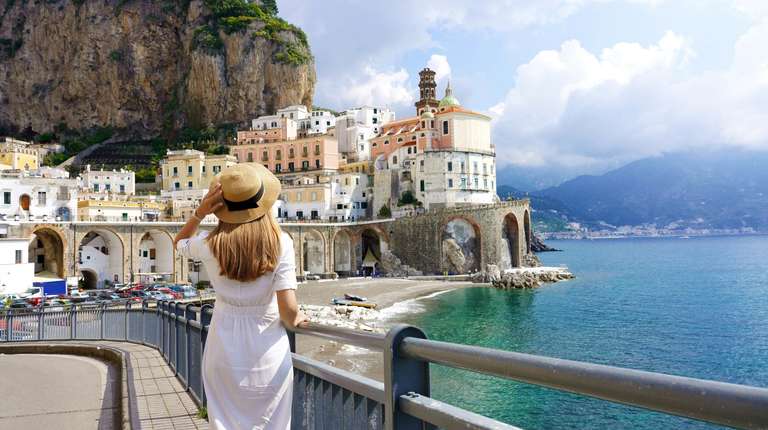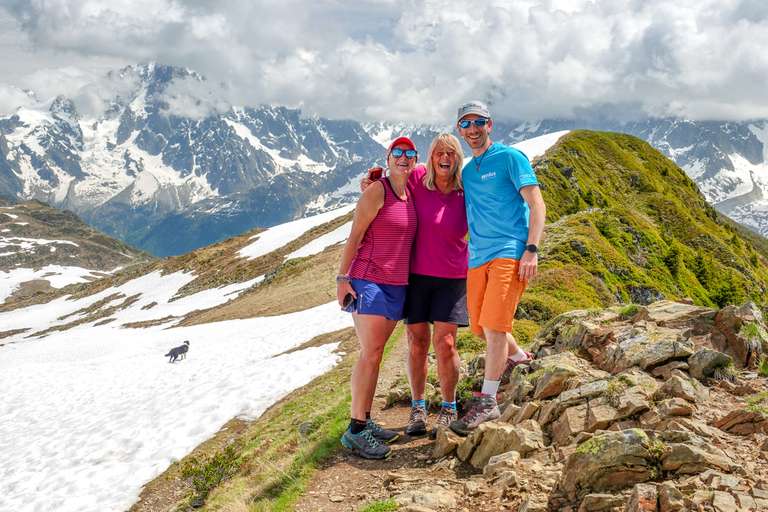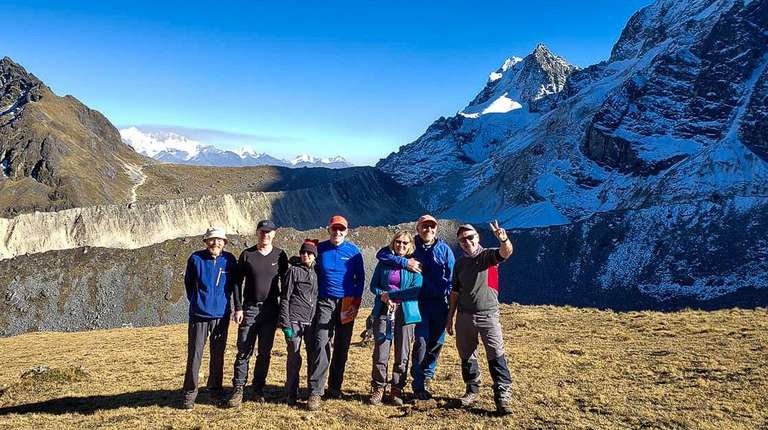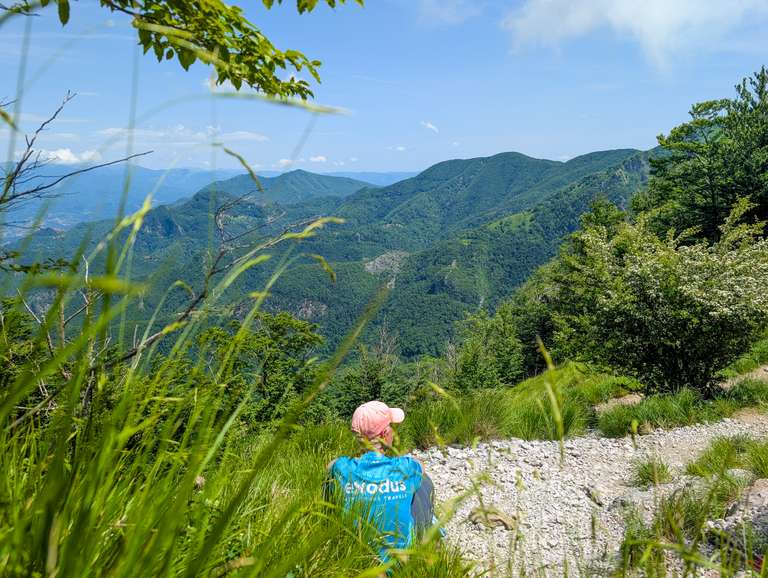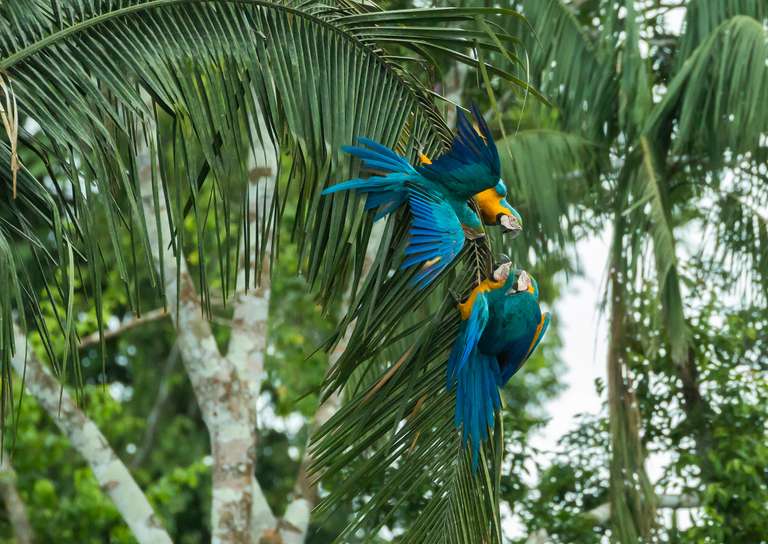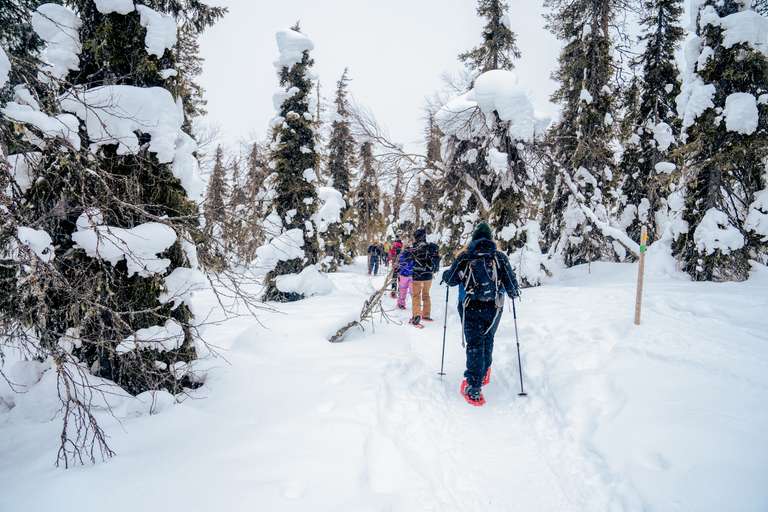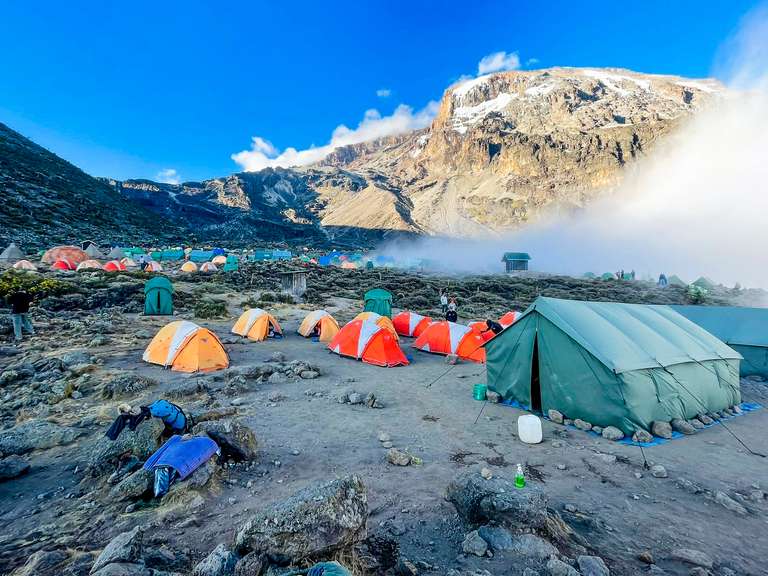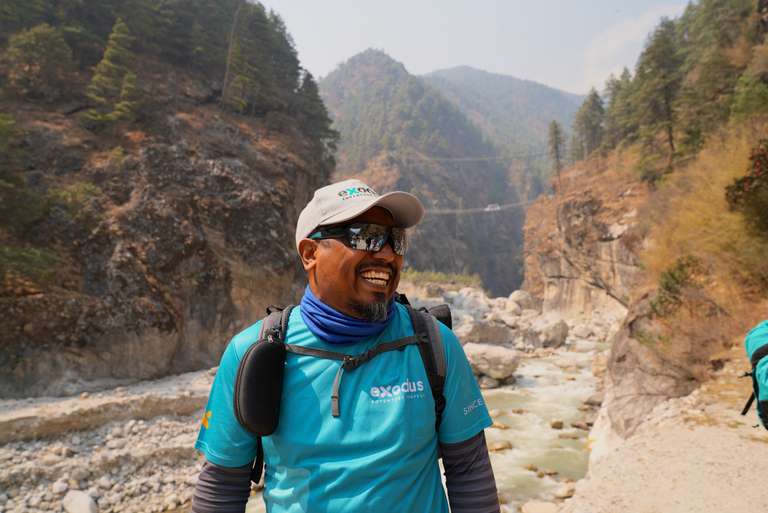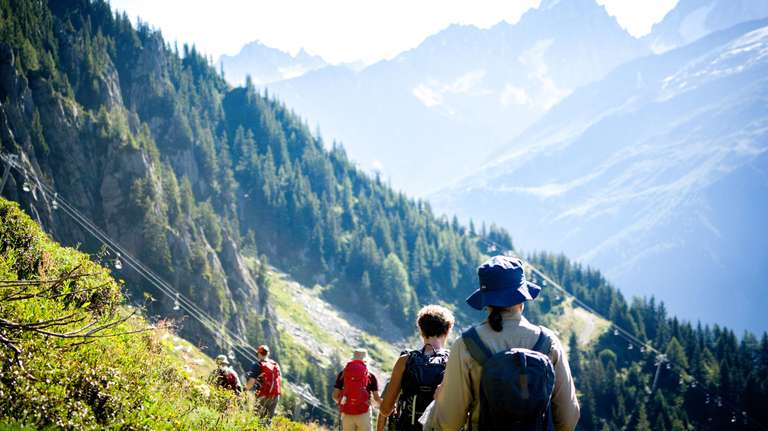Hiking in Japan: 7 Splendid Day Hikes

- Saadet A
- From
- Saadet A
- From
- Jeremy T
- From
- Tayla T.
- From
Our top 7 day hikes
1. Magome Tsumago Trail

Walk this paved path through the scenic forest of Magome
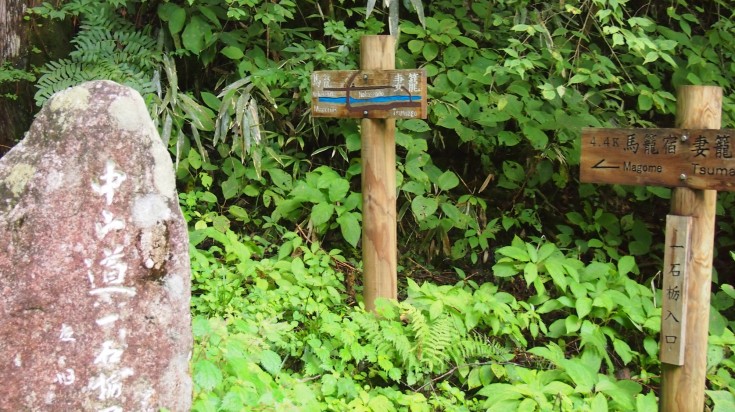
This trail runs between the villages of Magome and Tsumago in the Kiso Valley. The route follows the former Nakasendo route which once linked Tokyo with Kyoto during the Edo period and is a popular walking route with beginners and novices. The short and gentle path winds its way through forest, countryside and fields until arriving at Tsumago. If you’re carrying a heavy load, or just want to walk light, a baggage forwarding service is available from Magome, and you can have your bags waiting for you in Tsumago upon your arrival.
| Best time to visit: | April – November is the only time when the luggage forwarding service is available. |
| Distance/duration: | 8 km / 3 hours, factoring in a rest stop around the halfway point at a traditional Japanese house. Inside you’ll find local snacks and Japanese tea for sale. |
| Difficulty level: | Easy. There’s a little incline on this short route which makes for a gentle stroll through the countryside. The trail is also well signposted in both English and Japanese. |
Highlights:
- There’s a tea house located two-thirds of the way to Tsumago, make sure you stop and sample the free tea and sign the hiker's guestbook! There’s a little donation box by the exit if you’d like to leave a few yen for the owner.
- Visit the Magome Wakihonjin museum to brush up on Magome’s history. The town is home to a number of museums so there’s plenty of things to do when you arrive.
Lowlight:
- The trail intersects with the road at some sections, forcing hikers to walk on asphalt.
2. Omotesando trail

The Omotesando trail is one of many trails heading up Mount Takao, a mountain found in Meiji no Mori Takao Quasi-National Park, just an hour from Tokyo (take the express train from Shinjuku). The trail, also known as ‘Trail 1’ is the easiest of the six numbered trails that lead up the mountainside and is popular with visitors taking a trip to Tokyo. On a clear day, you can see Mount Fuji from the summit!
| Best time to visit: | March – May. Springtime on Mount Takao brings with it the famous cherry blossom. Try visiting during mid-week to avoid the crowds. |
| Distance/duration: | 3.8 km / 90 minutes, if you don’t stop at one of many attractions on the way up, which include a monkey park, an ancient temple and restaurants. |
| Difficulty level: | Easy. The route is popular due to its easy terrain and trail made up of paved paths from the base right to the summit. It is suitable for children. |
Highlights:
- Make sure you stop off at the monkey park found on the trail, here you’ll find over 40 Japanese macaques and a wildflower garden home to over 500 species of plants.
- There’s a hot spring bathhouse (Keio Takaosan Onsen Gokurakuyu) found at the base of the mountain if you fancy a relaxing post-hike dip!
Lowlight:
- There are lots of steep switchbacks along the trail that may be initially challenging to novice hikers.
3. Yoshida trail, Mount Fuji

The Yoshida Trail is the most popular trail up Mount Fuji and is the easiest of the four routes up the iconic mountain. Starting at the Fuji-Subaru Line 5th Station in the Yamanashi Prefecture, this trail is ideal for beginner hikers and professionals alike, as long as you’ve acclimatized to the altitude. This trail is particularly known for the difference between the ascent and the descent – while the ascending trail is lined with huts and resting stops (including toilets and small cabins), the descent is spare, and it's recommended to head down in one go. Lots of people hike the Yoshida trail overnight to witness the sunrise from the top of Mount Fuji.
| Best time to visit: | The trailhead is open after the rainy season, from July 1st – September 14th, though it can get crowded during weekends and during the Obon August holidays. |
| Distance/duration: | 13 km / 8 – 12 hours. From the 5th station, the ascent is almost 6 km and can be done in five to seven hours with multiple facilities to stop at on the way up. The descent is 7 km and can be done in three to five hours, though there are no mountain huts and limited facilities on the way down. |
| Difficulty level: | Moderate. The quick access to this trail and the number of huts and facilities available on the route up make it fairly easy to climb. However, the incline is steep in some places. |
Highlights:
- Spend a night in one of the mountain huts between the 8th and 9th station to enjoy the incredible views that trail has to offer and get the real Mount Fuji experience!
- If you’ve purchased a walking stick at the start of your trek, make sure to stop at each station on the way up to get it stamped. It makes a great personalized souvenir to commemorate your Mount Fuji trip.
Lowlight:
- The trail can be super busy and nearby accommodation books up well in advance.
4. Mount Kintoki


Suitable for beginner hikers and experienced walkers alike, the Mount Kintoki trail is a spectacular trekking route and one of the best hikes in Japan for viewing Mount Fuji from afar. Beginning from the Kintoki-jinja-iriguchi bus stop, the trail winds its way steadily upwards to the summit on a graveled and grassed path.
| Best time to visit: |
September – February. Many people flock to the mountain in the seasons of autumn and winter to enjoy spectacular views of Mount Fuji from the summit. |
| Distance/duration: | 4.6 km / 2 hours 30 minutes. There are two teahouses on the mountain summit if you wish to stop for a refreshing break and lengthen your time on the mountain. |
| Difficulty level: | Easy. Though some parts of the trail are quite steep, the general course is easy as you can see the mountain top from the first step (there’s little chance of getting lost). |
Highlights:
- Catch the glistening view of Lake Ashinoko from Mount Kintoki’s summit, which makes for a fantastic photo opportunity.
- Stop and take a photo with the famous Kintoki-yador-ishi rock, a large boulder and historical site referred to in the Kintaro legend. The trail heads right past it.
Lowlight:
- If the weather is bad, you won’t be able to spot Mount Fuji in the distance.
5. Yamanobe no Michi trail
The Yamanobe no Michi trail dates back to the 8th century and follows a 1000-year-old road through the countryside, winding through farms and small towns as it goes. The path is popular with history buffs and culture vultures alike as it is dotted with shrines and temples and is considered to be an excellent cultural heritage walk. It’s also located in the Nara area of Japan which is home to numerous UNESCO World Heritage Sites. If you’ve got the time to explore the surrounding region we’d recommend doing so!
| Best time to visit: | Year-round. This trail is enjoyable year-round due to its flat nature, but hiking in spring (March – May) is particularly enjoyable for the warmer weather and blossoming flowers. |
| Distance/duration: | 11 km/ 4 hours. There are a number of rest stops along the way including fruit and vegetable stalls and convenience stores if you need to pick up extra supplies. |
| Difficulty level: | Easy. Much of the trail is paved in dirt and is mainly flat, with little obstacles or inclines. |
Highlights:
- Visit the Isonokami shrine and Chogaku-ji temple to soak up the local culture. Isonokami used to be the family shrine of the leading conservative clan during Japan’s early history and is as interesting as it is beautiful.
- After the temples, explore Emperor Sujin’s tomb. This 400-meter-long ancient tomb dates back to Japan’s early emperors and is quite a spectacle on the trail!
Lowlight:
- As the JR Sakurai Line runs almost parallel to the walking trail you might find some areas crowded with tourists simply visiting the temples, rather than walking the trail.
6. Choishi-michi trail


The Koyasan Choishi-michi trail is a pilgrimage route and one of the numerous trails that lead to Koyasan town. Starting from Jison-in Temple in Judoyama town, the route traverses 24km of ground through to Okunoin cemetery and the Diamon Gate. For those looking for a shorter walk, the trail can be taken from the Kami-Kosawa or Kii-Hosokawa stations as well. Along the route, you’ll find over 180 stone pillars that were built during the Kamakura period and are used by hikers as trail markers. This well-preserved trail is also surrounded by UNESCO World Heritage Sites and it is worth spending a day or two in Koyasan at the end of your trek to explore the surrounding area.
| Best time to visit: |
Year-round. This trail can be hiked any time of the year and is accessible in all seasons. |
| Distance/duration: | 24 km / 7 hours. The hike can be shortened by 2 or 4 hours, by starting at alternate points Kami-Kosawa or Kii-Hosokawa stations. |
| Difficulty level: | Moderate. This hike isn’t particularly difficult; however, it is long and the first 5 kilometers has an elevation gain of 800 meters. |
Highlights:
- Stop to rest at Yadate, a small but charming village. It is a perfect place to take a seat and fill up on snacks and water.
- Gaze at the spectacular view and enjoy the sound of birds chirping in the trees while hiking the first five kilometers of an elevated height before heading down into the deep forest.
Lowlight:
- There are bears in the Koyasan area so it’s worth taking a bear bell just in case!
7. Senjogahara Plateau trail

The Senjogahara Plateau trail begins in the town of Ryuzu-no-taki (just a bus ride away from the city of Nikko) and winds its way past Lake Chuzenji and along the Yukawa River. The route is quite spectacular and offers excellent views of the surrounding marshlands, mountains and Nikko National Park.
| Best time to visit: | October. While the path is enjoyable all year round, it’s particularly spectacular in autumn when the leaves begin to turn. Note, the path can be lined with snow in the winter and not easily passable without snowshoes. |
| Distance/duration: | 15 km / 2.5 hours. Allow extra time for stopping to take pictures of the landscape. |
| Difficulty level: | Easy. The trail is relatively flat for most of the distance which makes it easy to walk. |
Highlights:
- Take a quick dip in the Ryuzu waterfall found on the trail, it’s beautiful! It’s considered to be one of the most beautiful waterfalls in Japan so try visiting mid-week to avoid the crowd and make sure you bring your camera.
- Stop at Lake Yunoko for another refreshing dip before visiting the local lakeside café in Yumoto Onsen for a tea break.
Lowlight:
- There’s one extremely steep section of the trail found at Yudaki waterfall.
Preparing for your hike
Ensure you’re fully prepared before embarking on your hiking adventure or joining a Japan walking tour. Consider both your fitness level and what to pack before you depart. Below we’ve provided a handy list of things you might need to pack before you hit up a hiking trail in Japan.
- Trekking shoes with comfortable ankle support
- Comfortable walking socks
- Rain gear (waterproof jacket & trousers) & change of clothes
- Shirts, pants and underwear (water absorbent and quick-drying, not cotton)
- Cold weather gear (layers, fleece, thermals)
- Drinking water and energy bars
- Personal medication including painkillers (to tackle any headache you might feel from mountain sickness) and plasters (for blisters)
- Sunglasses and sun protection
- Hat and gloves (rock climbing/ scrambling may be more comfortable with hand protection)
- Large backpack, backpack cover, & plastic bags to separate items (mainly to store wet clothes)
- Microfiber towel (to dry sweat!)
- Headlamp
Few places so exquisitely manage to blend ancient architecture with incredible scenery better than Japan does, so strap on your walking boots and take them to the trails! When you’re hiking in Japan, don’t forget to research elevation and speed at which it increases to ensure you’re fit enough to handle the climb and make sure you pack the essentials. Whether you’ve opted for a one-hour stroll or a nine-hour hike, food, water, and extra clothing should always be packed. For ease in traveling around Japan, there are numerous Japan tours that cover excursions and provide in-depth itineraries. You can also contact our travel expert to plan a customized trip in Japan.

